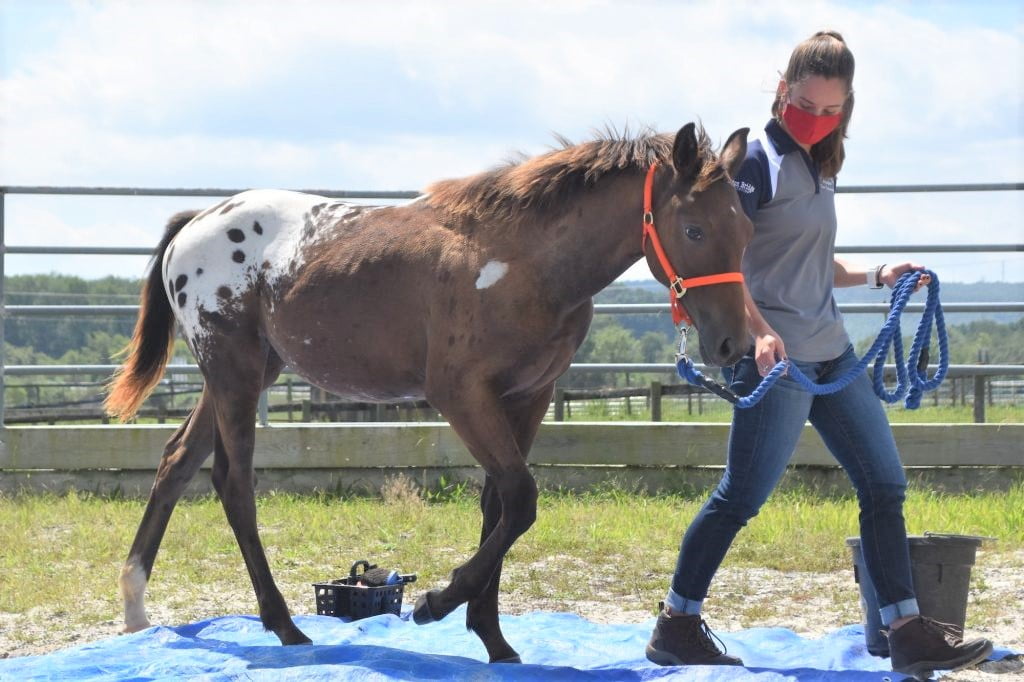
Ten horses are to be auctioned by the equine program within Virginia Tech’s Department of Animal and Poultry Sciences through the end of October in the traditional online format.
Proceeds from the sale are re-invested in the Animal and Poultry Sciences departmental programs. A further benefit is that approximately 1,800 students have gained valuable experience working on all facets of the sale since the first one was held in 1995.
The format for the horse auction is similar to that used by eBay. Users can set bids, including an auto-bid function with a maximum price. Bids that are made at the end of the auction extend the auction by five minutes to allow people ample time to get their bids entered. Bidding began on Oct. 1 and will run through Oct. 30.
While the sale is occurring online as usual, there will be no in-person viewing options of the horses. They are stabled on either side of US-460. The herd located next to the Alphin-Stuart Livestock Arena is the equitation program herd, which contains 20-30 horses that are used for equitation classes and the hunter and dressage equestrian teams. The other group is the Smithfield unit, containing the teaching and research herds, which primarily contribute to the auction.
“We hope that potential buyers of our program understand that the proceeds go back into supporting the valuable environment for the greater Virginia Tech community,” said equine center manager Natalie Duncan.
In addition to providing the horses, the equitation program and equitation teams also recently initiated the Equine Volunteer Program, which brings together staff, faculty and students from all majors to assist in the daily care of the horses. For some students, this is a source of stress-relief from classes, an opportunity to try something new, a place to network and make new friends and a way to give back to the campus community.
The farms create unique opportunities for animal and poultry sciences students to gain valuable hands-on experience.
“We hope to set a precedent within the equine industry by having students entering the workforce with professionalism, an expansive skillset and an awareness of the many aspects of a very large and diverse industry,” Duncan said.
Faculty and staff volunteers are at the US- 460 sites once a week while student volunteers are there twice a week, all while following the COVID-19 safety protocols.
We do everything possible, including sterilizing our halters, lead ropes and equipment and leaving stuff out in the sun,” Duncan said. “We’re being as careful as we can to continue creating a safe environment for our staff and students.”



